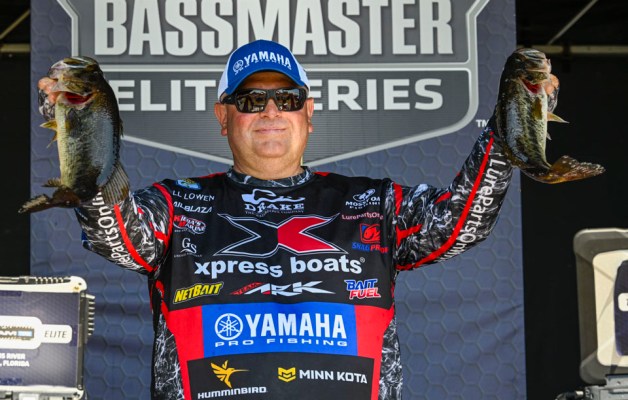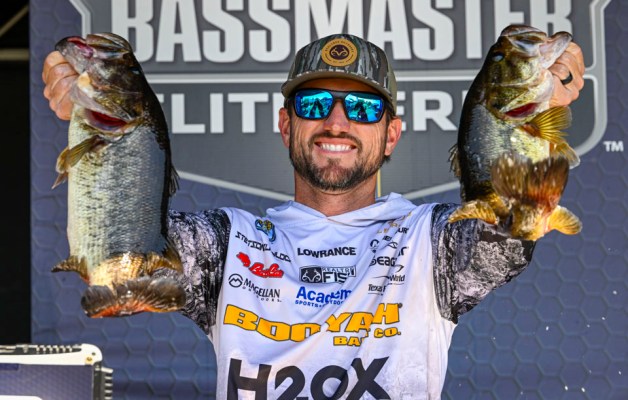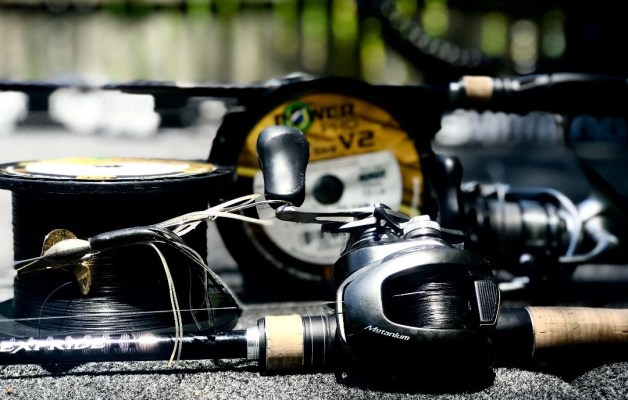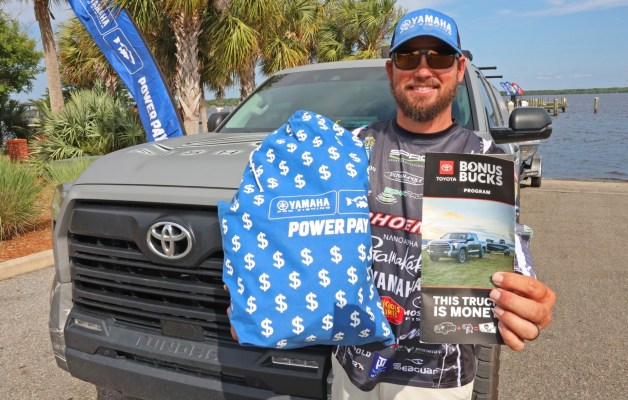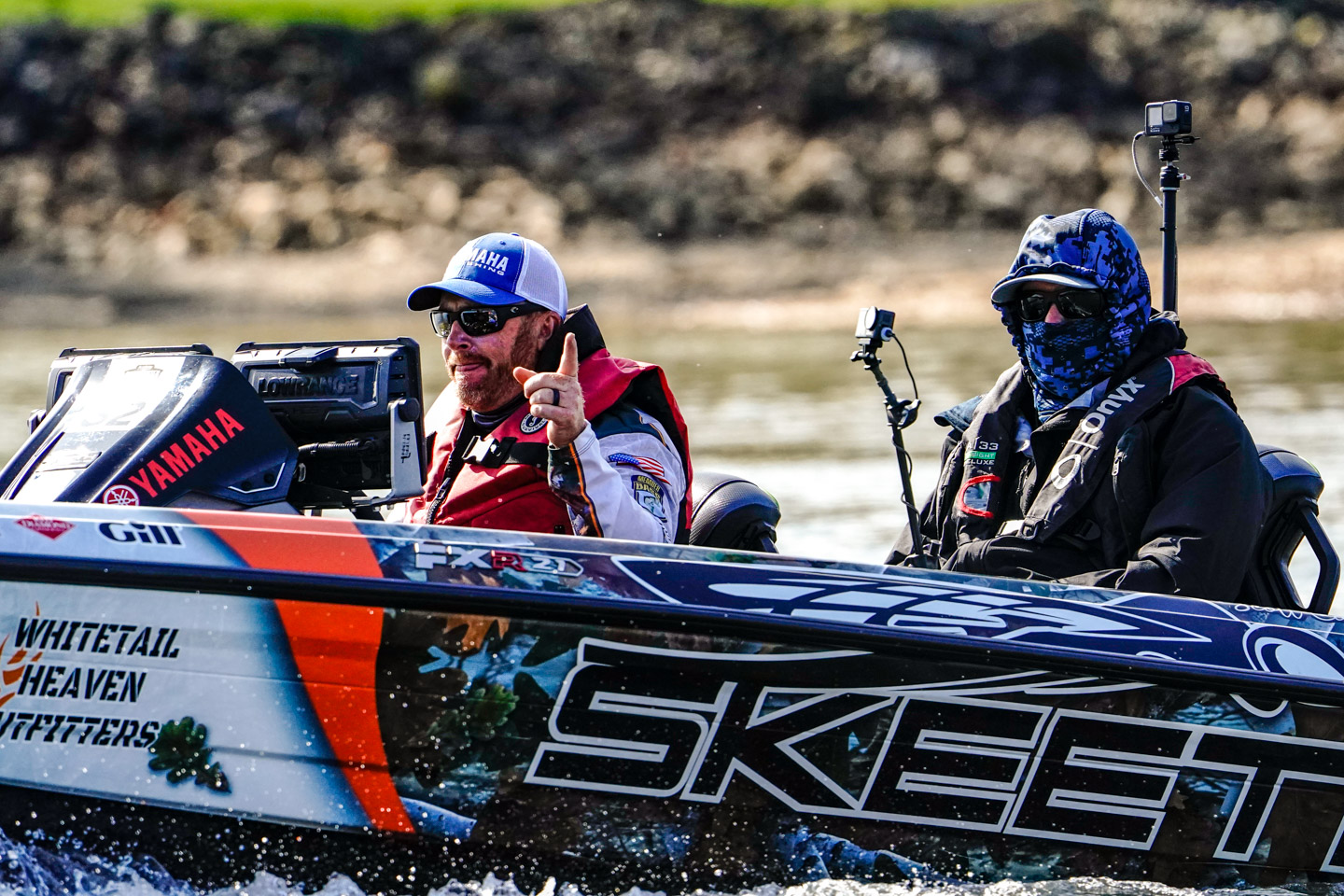
The Bassmaster Elite Series pros have made their way to Shelby County, Ala. where they are now only hours away from the start of the 2023 Whataburger Bassmaster Elite at Lay Lake. Local angler Scott Canterbury will be one to watch this week. We sat down with Canterbury to get his take on how practice has gone so far.
“This is my least favorite time of year to be here,” Canterbury said. “I said it when the schedule was announced. It’s just tough this time of year.”
A seemingly depressing segue into the conversation, Canterbury was not as much pessimistic as realistic. He knows that Lay Lake can be one of the best and most productive fisheries in Alabama, at the right time. And it can be one the toughest at times too.
“This is a tough time of year. I was really, really hoping that we would have an early summer. Instead, we’ve had the most drawn-out spring that we’ve probably had in 10 years. Last week, it was in the 40s every night.”
Canterbury spent the spring hoping for hot weather to hurry into the area, so that the bass would make their way completely offshore by the time this event came to town. But there was a lengthy and beautiful spring instead.
“I was wanting it to be really hot and get these fish out in some brush and get them in their summertime stuff. Because this lake gets really good again in June; it’s just this time of year, it’s a tough, tough bite.”
The “postspawn funk” is to blame for the tough fishing, according to Canterbury. This is the window of time between when bass are actively bedding and when they are firmly settled into their offshore haunts where they feed and recuperate throughout the summer.
“And the fish haven’t fed back up. A month ago, you could catch 18 pounds of spots. You catch those same fish now and you’ve got 15 pounds.”
Laying eggs, sitting stationary on a bed and defending said bed all attribute to the drop in weight per bass between the prespawn and the postspawn. Each female bass could easily lose 8 ounces through this process, which amounts to 2 1/2 pounds across a five-fish limit.
This quick math makes it easy to predict that the leaderboard will be a little light for this one. The resulting weights of already tough fishing will be exaggerated by the fact that the fish weigh as little on average as they will all year.
“I’m just guessing, but I’m guessing 16 pounds a day is going to be right there to win, and 14 a day is going to be right there to make a Top 10.”
Canterbury acknowledges that those are light weights for a fishery that’s as healthy as Lay Lake is. He’s reporting shad everywhere. And there is a shad spawn at play. But that won’t matter much in this one.
“There’s a little shad spawn. But we’re not blasting off until 6:30. And its daylight at 5:30, so that’s really going to hurt.”
The shad spawn that comes along towards the end of the bass spawn is often all anglers have to look forward to when competing against the adverse effects of the postspawn funk. But it’s often an early and over with bite, especially on certain fisheries. Lay is one of those.
“I think it’s different here than some lakes where they spawn on docks and bridges and stuff like that. With this grass, I think they spawn more at night and then they’ll go a little bit in the daylight. But they just don’t keep going.”
Taking the shad spawn out of the equation, is there any chance the bass spawn is still lingering like we saw two weeks ago for the Santee Cooper Lakes Elite?
“I saw one today. But it’s pretty much all done. I didn’t look much and wasn’t looking when I saw that one.”
Though he wasn’t actively looking for spawners, Canterbury would have still expected to stumble on more while just fishing shallow, if there was a big wave of bass up.
“There was a big wave in February. So, they’ve been spawning a long time. And these late spawners are here today and gone tomorrow. Somebody will probably catch a couple of them, but it will be tough.”
Not only are the spawners few and far between, but fishing pressure is another reason Canterbury won’t be putting his eggs in the bed fishing basket.
“This lake gets a lot more pressure than most places that we have been fishing. There are tournaments every day and every weekend. Those guys are picking them off too.”
With the shad spawn dwindling by the time the anglers make it onto the water, the bedding activity on its last leg and the deep bite not yet in full swing, you’re likely starting to take hold of why Canterbury seems a little less than enthused about the fishing on Lay Lake. Just because he’s not anticipating big weights, that doesn’t mean he’s not hopeful for great results.
“It is a weird time of year for us to be here, but I’m banking on local knowledge paying off.”
Having perhaps as much experience here as any other angler in the Elite Series field, Canterbury knows his success this week will ride heavily on his ability to fish loose, cover water and grind.
“This is a tournament that could be won junk fishing every day. You may find one good area and go through it, but then hit new stuff every day.”
With fish scattered all over the place and in various stages, Canterbury believes it will be hard to find a loaded area or dial in one consistent bite. Instead, anglers will have to be versatile and intentionally target resident fish that they know will not replenish, then move on to the next spot.
“That would be a really good game plan. That’s sort of how I plan on fishing. Today, I didn’t overdo it. I was off the water by 5 o’clock, and I’m going to try to do that every day.”
Canterbury isn’t one to leave time on the table. He’s usually hard at it during practice and looking for something to go on until time runs out. But he knows that practicing that way here, where he has so much history, could actually be a bad thing.
“I hate to get outworked, but there’s not many people in this tournament that know as much about Lay Lake as I do either.”
Knowing this much can actually be a problem at times. Locals crash and burn at every event. They either get too spread out or start running too much history and aren’t able to fish the moment.
“I’ve fished tournaments here all my life off one day of practice or no practice and I would like to figure it out as the tournament goes on. You just want to have a good feeling that when you pull up that there are fish in the area. That’s sort of how I’m doing my practice.”
Canterbury has sampled a few things that have worked in the past through practice so far, and he reported catching several fish, but not any big ones. This is exactly what he was hoping to do though, find a few ways to get bit and rule out areas that were unproductive. All while not burning any big bites in practice.
Canterbury also reminded us that the current is always a big deal here on the Coosa River, and he had good news to report there.
“They’re running one turbine out of Logan Martin and two out of Lay. They have been for the last four or five days. There’s definitely current all the way up and down the river.”
This current positions bass, stirs up the water and brings baitfish and other forage right to where the bass are sitting. Current is crucial on the Coosa, especially for the spotted bass. No more so though than beneath Logan Martin Dam.
“If somebody can dial it in, they can win the tournament at the dam. Will Davis is probably the best at fishing the Logan Martin tailrace. He could definitely win at that dam. But if he gets a lot of pressure, that’ll make it tougher.”
The current is strong throughout the whole lake as long as water is being pumped in through the Logan Martin Dam and out through the Lay Lake Dam. This means that any bend in the river could be in play if an angler can dial in a little something to themselves. The problem arises when one dam is on and the other is off.
“Lay is real finicky about water level, and if it drops 2 or 3 inches in the grass, it just kills that bite. It looked like it was down a good 6 or 7 inches at one time today. And then this evening, I think it started filling back up a little bit.”
This fluctuation in water level and understanding of what it does to the fish drastically increases the homefield advantage for local anglers like Canterbury, Will Davis Jr., Gerald Swindle, Matt Herren and others. Canterbury knows this, and he is hoping the depth of his knowledge here pays off this week for what he expects to be a grinder.
“You’ve just got to adapt hour by hour to what’s going on. It’s going to be really diverse in the way it fishes. There are going to be fish caught in the brush out in 15 feet of water all the way up to people catching topwater fish. It’s definitely going to be a really good tournament.”


